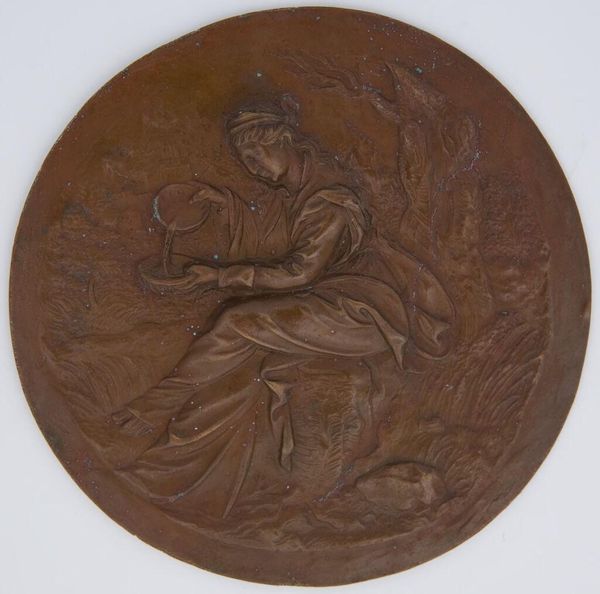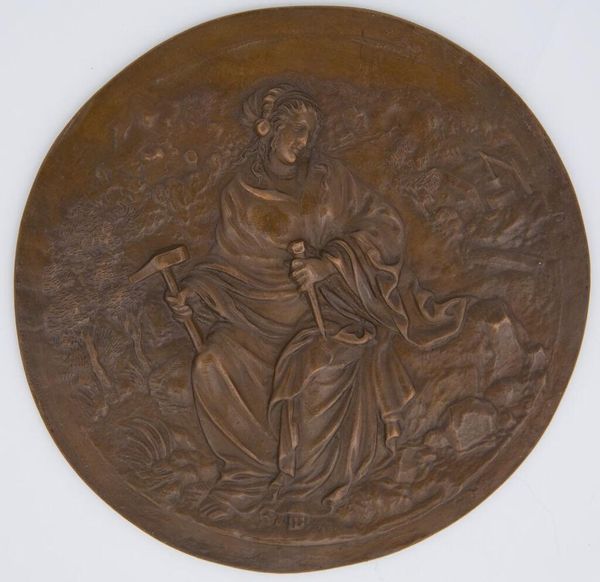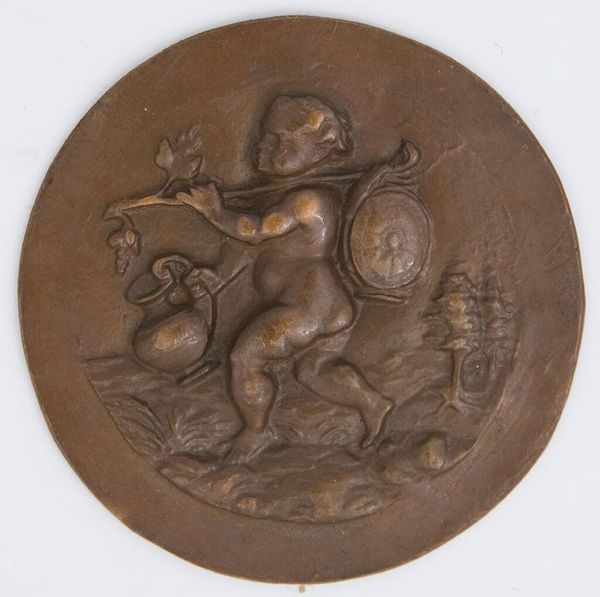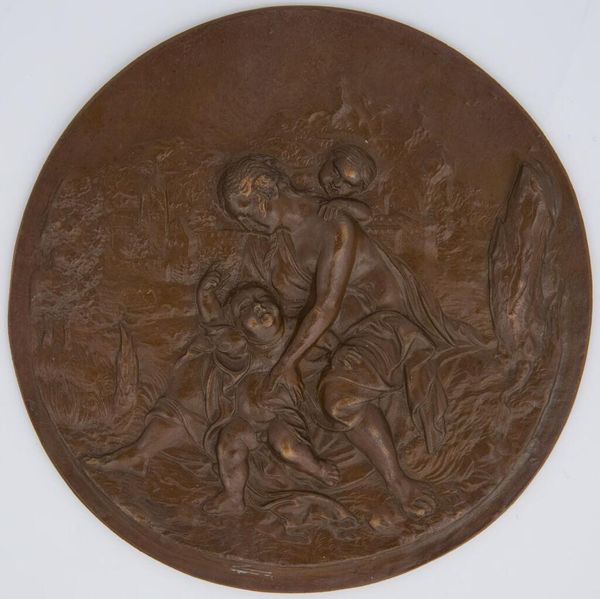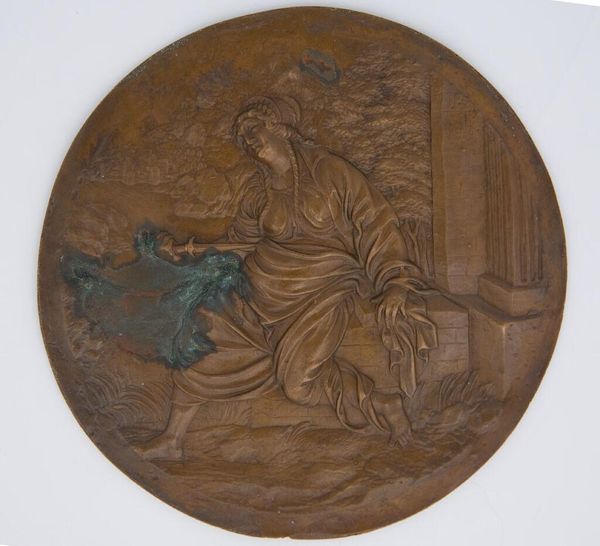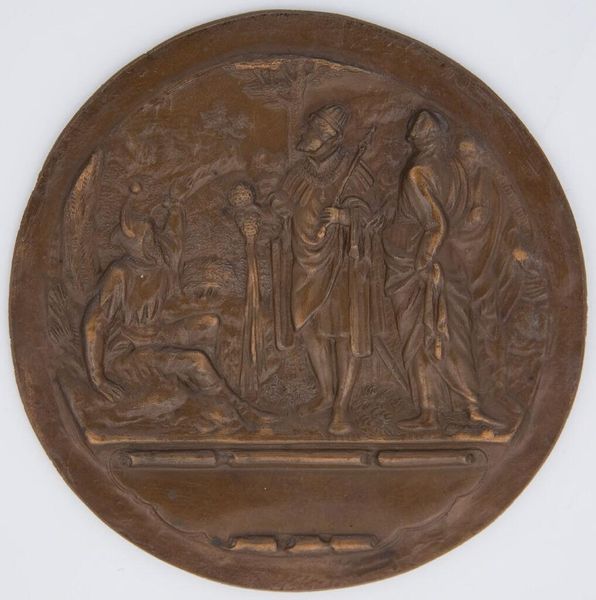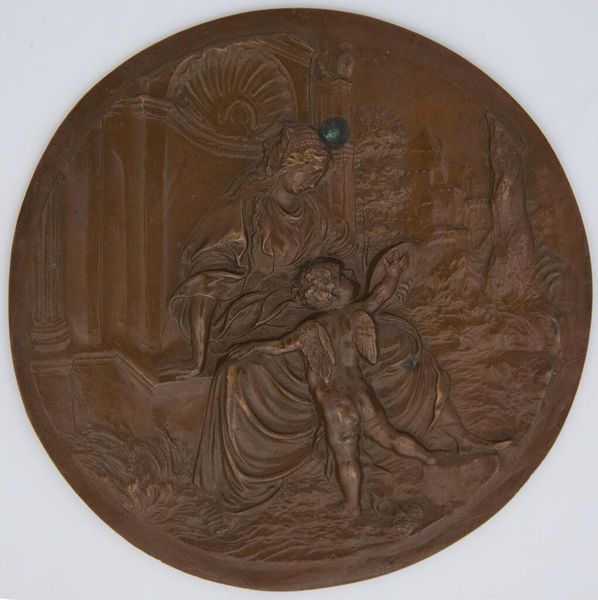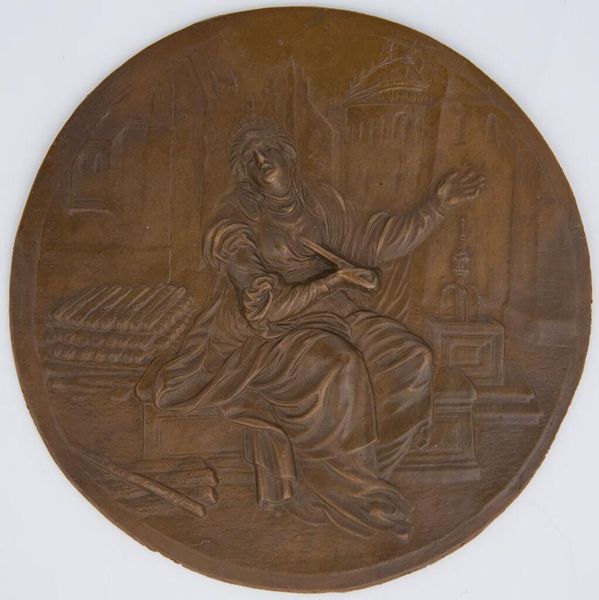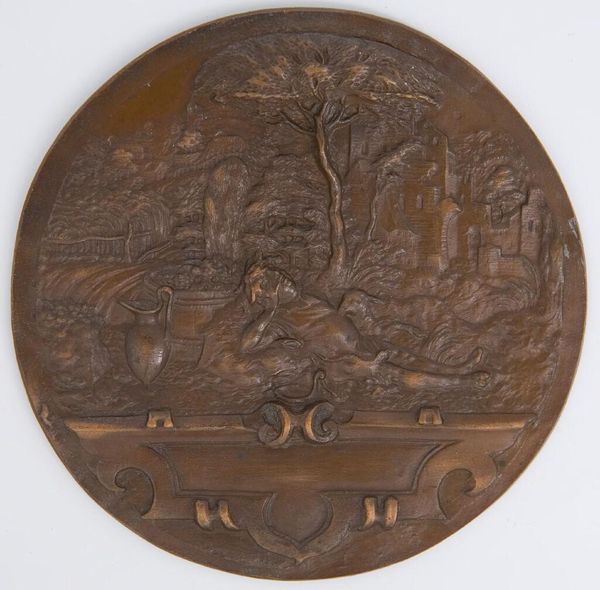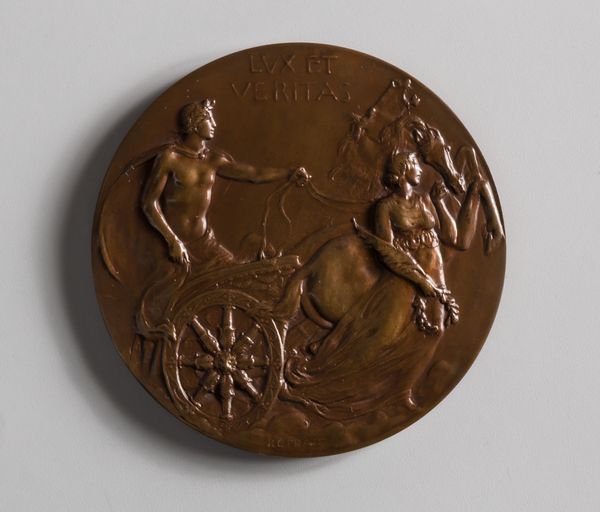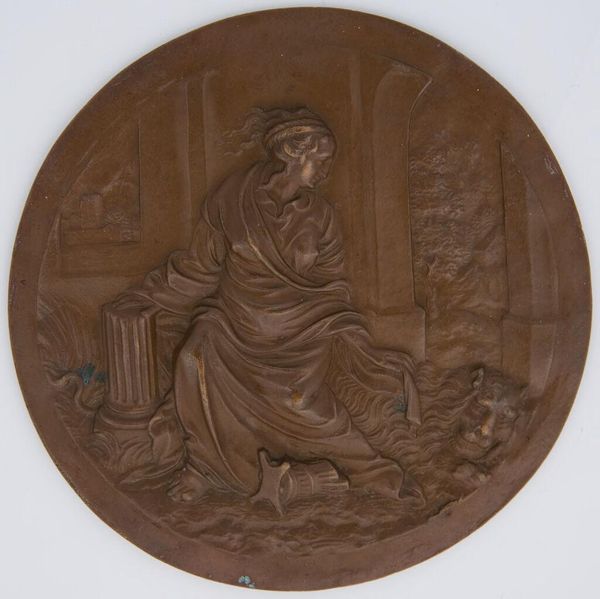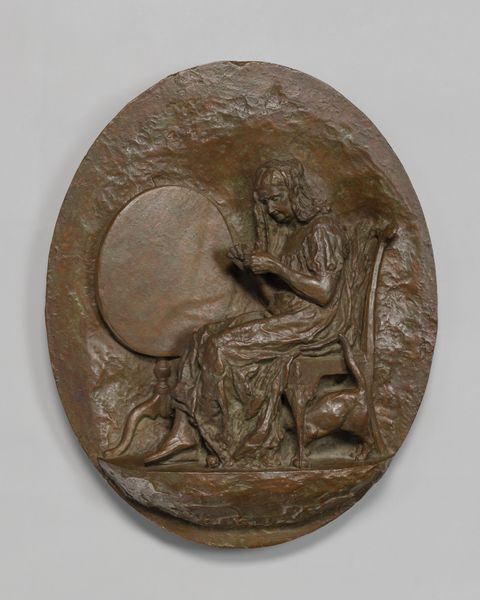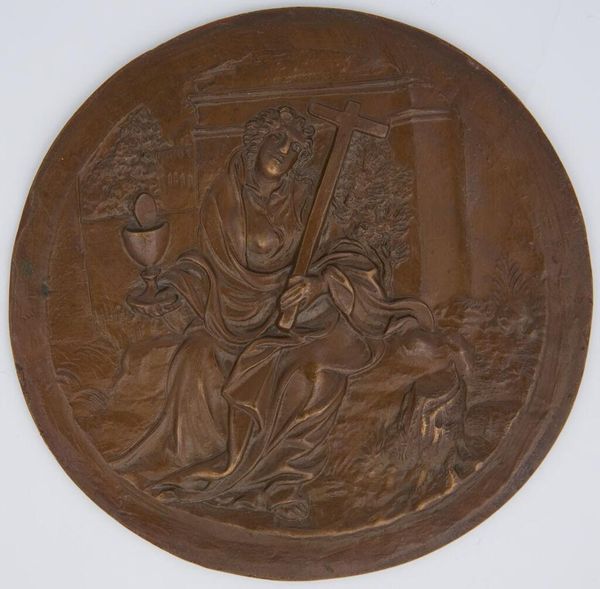
Putto with Glass, from the series "Bacchus Boy and Putti" early 20th century (original from c.1530-35)
0:00
0:00
Dimensions: 4.5 cm (1 3/4 in.)
Copyright: CC0 1.0
Curator: This intriguing bronze roundel, part of the series "Bacchus Boy and Putti," presents a putto with a glass. It resides in the Harvard Art Museums and its creator is, alas, unknown. Editor: It’s quaint. The texture of the bronze gives it a warm, almost nostalgic feel. I'm also immediately drawn to the iconography of the putto itself. Curator: Ah, the putto, a symbol steeped in classical and Renaissance visual language. Here, it carries what appears to be a glass vessel filled with fruit, evoking themes of abundance and, perhaps, youthful indulgence. Editor: How fascinating that these symbols persist, even when divorced from their original contexts! The round form itself, reminiscent of a coin or medal, speaks to the role of art in commemorating values—or perhaps, desires. Curator: Indeed. The series' connection to Bacchus, god of wine and revelry, further enriches the symbolic layering. It is an object that manages to contain so much! Editor: It’s a beautiful little artifact, a material record of our enduring fascination with pleasure, beauty, and the symbols we use to understand them.
Comments
No comments
Be the first to comment and join the conversation on the ultimate creative platform.
